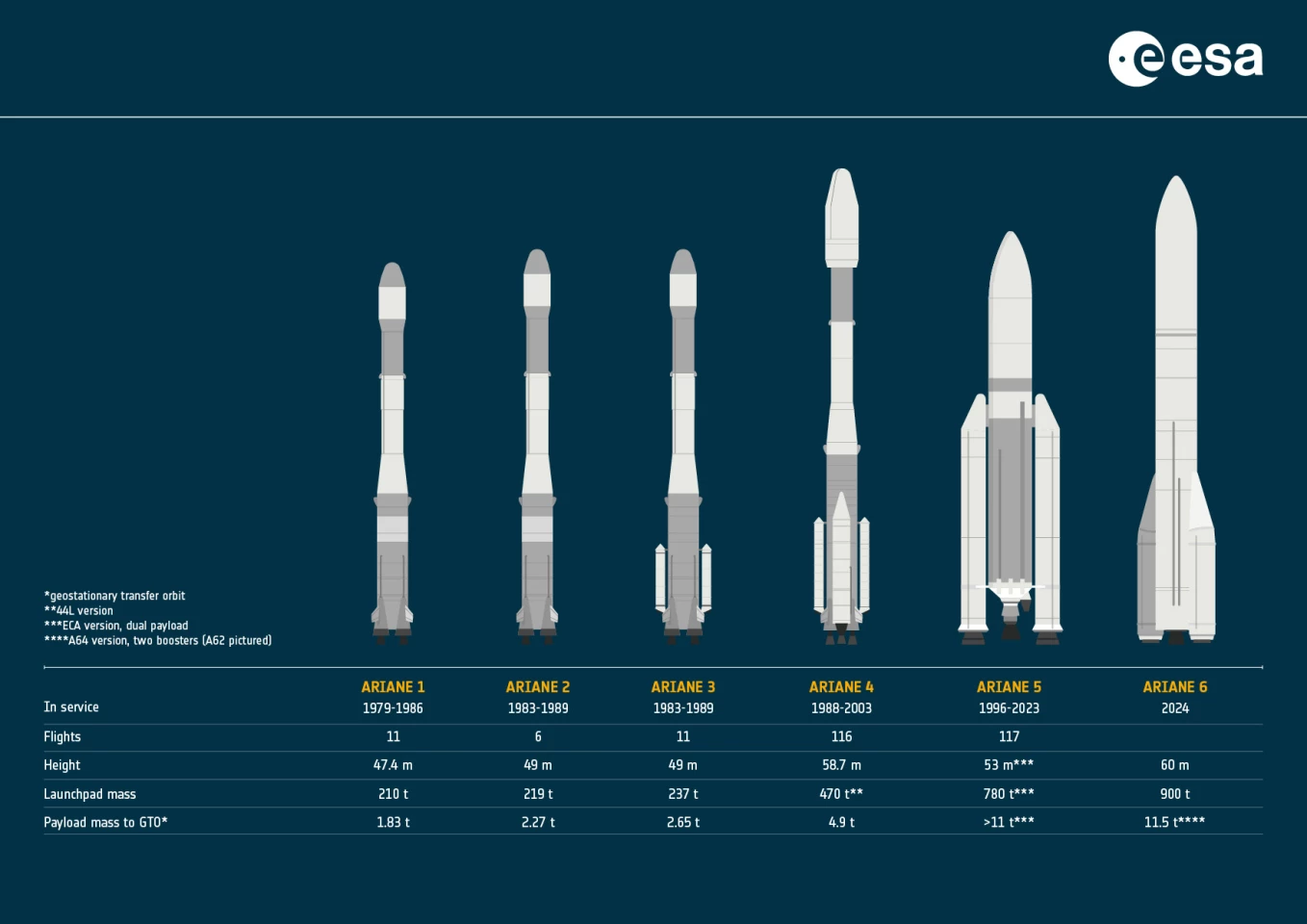After 27 years and 117 missions, ESA's heavy-lift Ariane 5 rocket has launched into retirement. On July 5, 2023 at 22:00 GMT, Flight VA261 successfully lifted off from the Centre Spatial Guyanais (CSG) in French Guiana, to carry the Deutsches Zentrum für Luft- und Raumfahrt (German Aerospace Center (DLR)) Heinrich Hertz experimental communications satellite and the French communications satellite Syracuse 4b into geosynchronous orbit.
As the last Ariane 5 blasted into the skies over the South American jungle, it was amid an atmosphere of nostalgia, mild frustration, and concern. The launch had already been delayed from June 16 due to a malfunction in a pyrotechnic system that required it to be replaced, and again on July 4 because of bad weather, which is where the frustration comes in.
The concern came from its payload including a vital French military satellite and the fear that, despite its long string of successes, Ariane 5 might replay the mid-air explosion that ended its maiden flight in the 1990s. However, things went off without a hitch and the final payload was released 33 minutes after leaving the pad.

The nostalgia came from Ariane 5's venerable history.
Designed as an expendable launch system by France's Centre National d'Études Spatiales (CNES) and built by ArianeGroup, Ariane 5 was the latest and largest of Europe's Ariane rocket systems. Though it was named "Ariane," unlike Ariane 1 through 4, Ariane 5 was a completely new two-stage liquid-fueled booster with two strap-on solid-fueled boosters that gave it a payload capacity of 21 tonnes to low-Earth orbit – twice that of Ariane 4.
It's also notable as being Europe's first human-rated rocket due to its original mission being to carry ESA's answer to the US Space Shuttle, the Hermes spaceplane. Despite Hermes being cancelled in 1992, Ariane 5 went on to become ESA's flagship booster in 1996 as it exemplified Europe's independent launch capabilities.

In a number of variants, Ariane 5 lifted communication, navigation, and scientific payloads into both Earth orbit and into deep space. These included a dozen Galileo global positioning satellites, the Rosetta comet explorer, the Herschel Space Observatory, the Planck Space Observatory, the BepiColombo Mercury probe, the James Webb Space Telescope, and the Jupiter Icy Moons Explorer (Juice). In addition, Ariane 5 was used to launch five Automated Transfer Vehicles (ATV) robotic cargo ships to the International Space Station (ISS) between 2008 and 2014.
One of only four fully operational heavy lift rockets in the world, Ariane 5 will be replaced by the Ariane 6, which is under development, with a first flight scheduled for later this year. The replacement is expected to cost half as much to operate and will increase the launch rate from around eight to 11 per year. The timetable to get the new rocket into service is very important because there is fierce international competition for space launchers – especially heavy lifters – and Europe cannot afford to lose the business.
Source: ESA
Update (Jul 10, 2023): This article originally stated that Ariane 5 has "a payload capacity of 21,000 tonnes to low-Earth orbit." This should have read "21 tonnes" and as now been corrected in the text. We sincerely apologize for the error and thank the readers that pointed out the mistake.








